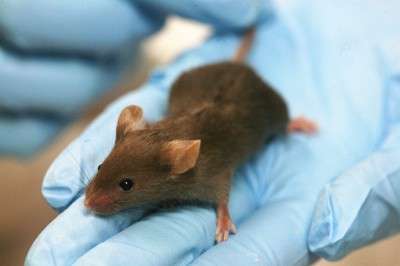How much of your DNA is functional?

(Phys.org) —The human genome consists of six billions rungs of DNA – but how much of this DNA is actually doing anything important?
Two years ago research emerged that suggested that a large proportion of DNA, 80 percent, was functional. This figure came from interpretations of research conducted by the Encyclopedia of DNA Elements (ENCODE).
This estimate was almost immediately taken up by news outlets and received a lot of media attention, as well as backlash from other geneticists including Dr. Dan Graur who called the findings "absurd".
Now a new study, lead by Dr. Gerton Lunter from the University of Oxford's Wellcome Trust Centre for Human Genetics in the UK, has instead found that only 8.2 percent of human DNA is functional.
Yes, a jump from 80 to 8.2 percent seems a bit extreme – and you may be asking how these two research groups came to such drastically different conclusions? As University of Melbourne researcher Dr. Charles Robin explains, the disparity lies in the definition of the term "functional".
ENCODE defined functional as a "biochemical function" – meaning that if a section of DNA is transcribed or bound by particular proteins, it would be termed "biochemically functional", even if it did not have any eventual impact on the individual's phenotype.

It was this version of functional that lead to the large estimation of 80%. However, many researchers, including Dr. Graur and Dr. Robin, disagree with this definition of function.
Dr. Robin instead suggests the term "functional" should be used to denote sections of DNA that, if disrupted, would have harmful effects, therefore making these sections of DNA critical to development – and this is the definition used by Dr. Lunter and his colleagues in their recent study.
To test this a geneticist could purposely delete sections of the DNA and examine the impact on fitness. However, there are obvious ethical limitations for doing this in humans.
Instead, Dr. Lunter and his research group examined the disruptions generated by evolution to assess what parts of DNA are functional. Essentially, those sequences that were most unchanged, or conserved, are likely to have a function, while those without function evolve over time without any constraints.
The researchers looked at a range of species that all had different levels of divergence from humans. The functional part of the genome has changed over evolutionary time as species diverged, leading to phenotypic evolution that causes a human to look different to a mouse. Lunter and colleagues quantified these differences between human genome and the genomes of species of various evolutionary distances to arrive at their estimate of 8.2 percent.
"The figure of 8.2 percent is not surprising," said Dr. Robin. "It is what we would expect based of previous research. The great thing about this paper, however, is the quantitative methods that have now given us a clearer answer."
These results will not only have significant implications for genetics research, but also will become important for a number of other fields, such as medical research.
When using mice models, knowing the differences in functional genes between mice and humans will help medical researchers understand how humans may react differently to mice in medical studies.
The next step for researchers will be to determine the purpose and function of this important 8.2 percent of DNA.
And what about the other 91.8 percent?
Surprisingly, the rest of the DNA is mostly useless, and although there may be genes in there that encode interesting elements, research will focus first on uncovering the secrets of that small, but important, 8.2 percent of functional DNA.
More information: Rands CM, Meader S, Ponting CP, Lunter G (2014) "8.2% of the Human Genome Is Constrained: Variation in Rates of Turnover across Functional Element Classes in the Human Lineage." PLoS Genet 10(7): e1004525. DOI: 10.1371/journal.pgen.1004525
Journal information: PLoS Genetics
Provided by University of Melbourne

















